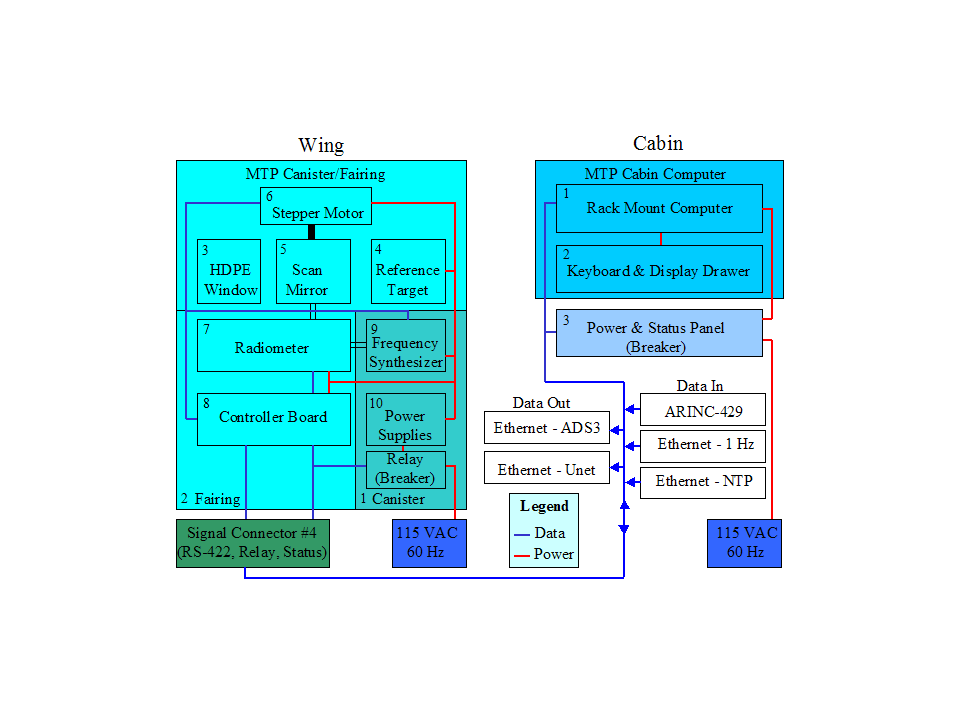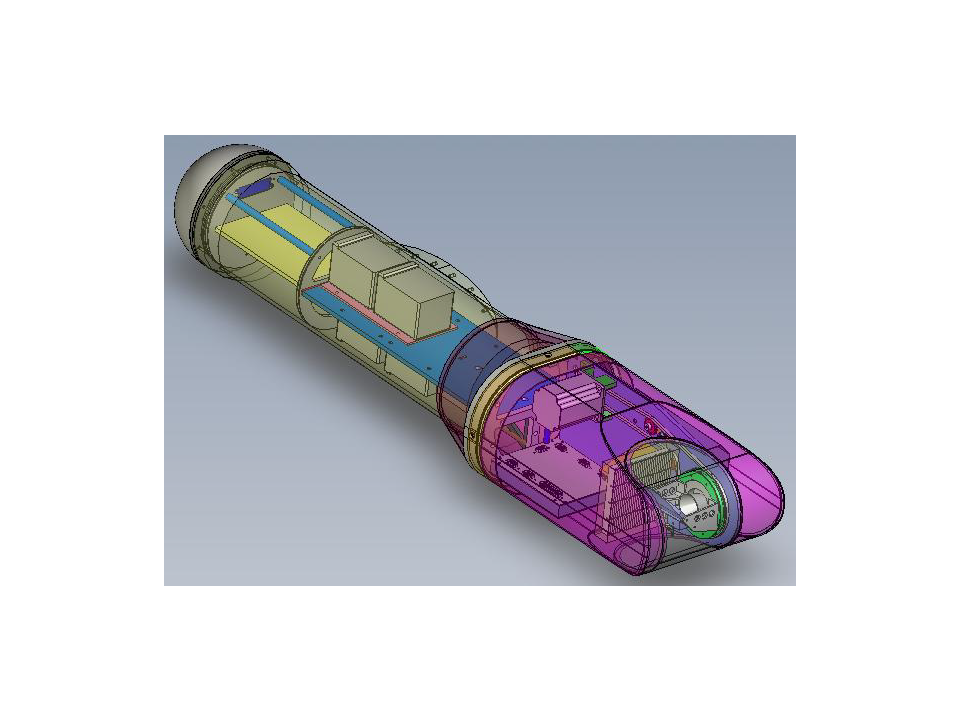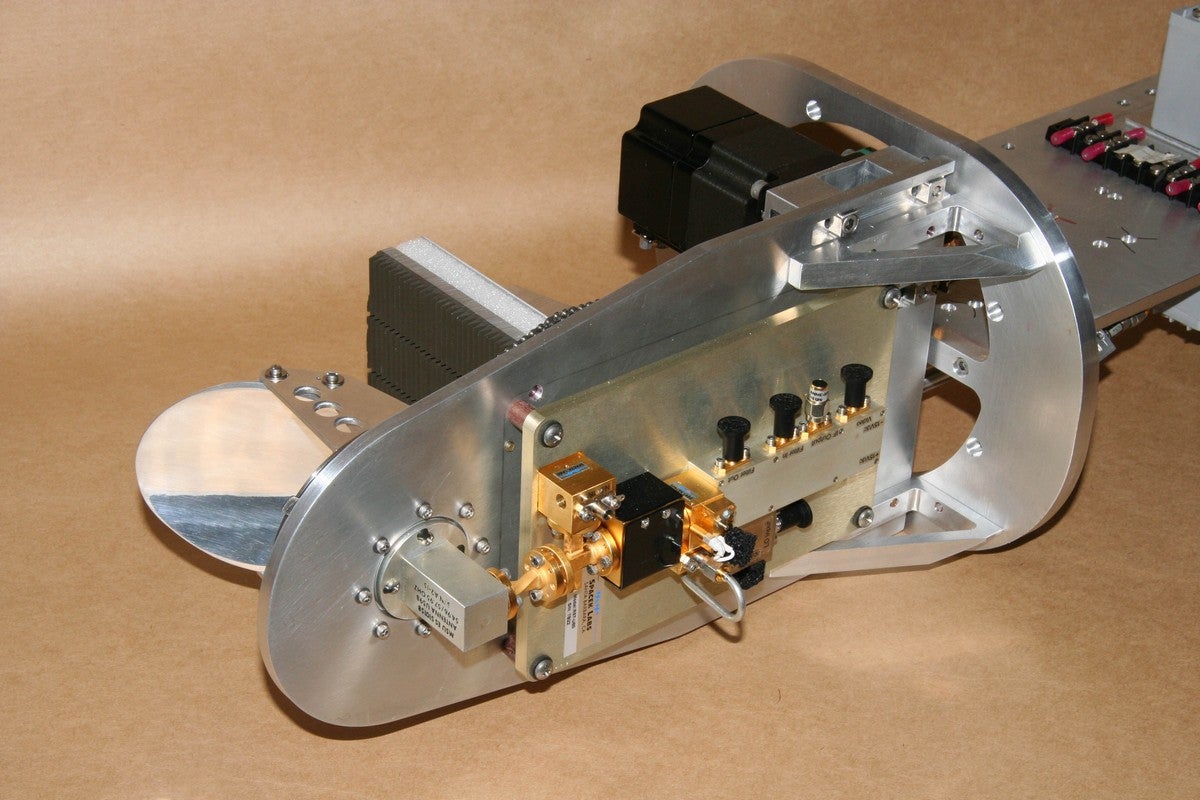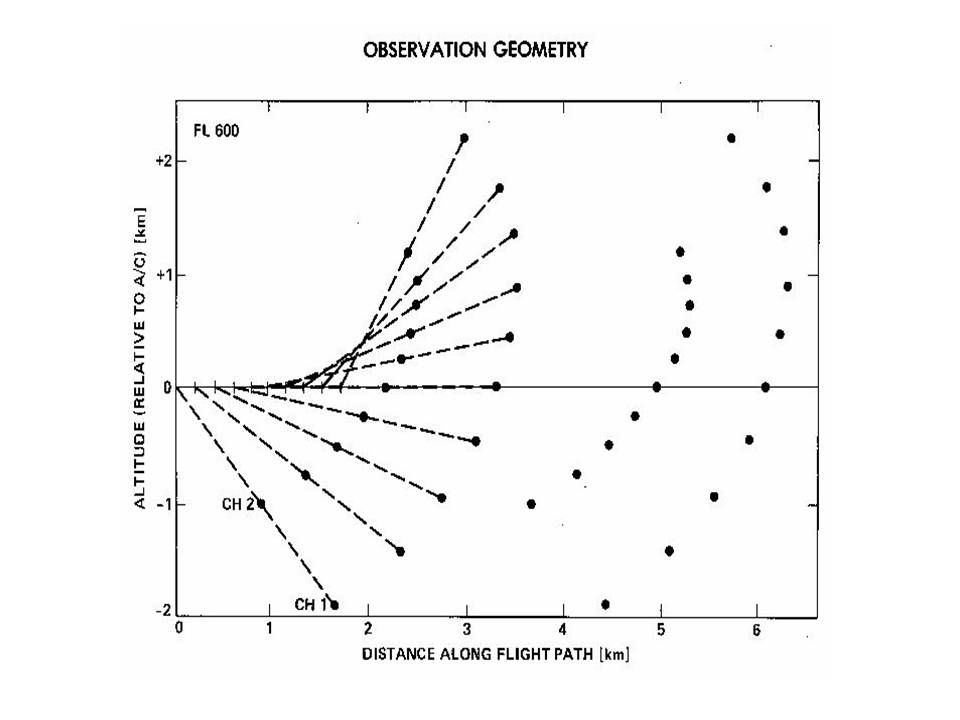Microwave Temperature Profiler
MTP is a scanning radiometer that observes emitted radiance (brightness temperature) at 56.363 GHz, 57.612 GHz, 58.363 GHz. It collects measurements at 10 viewing angles between +/- 80 degrees from horizontal. It is housed in a PMS canister with a modified fairing which has a transparent window built into the front. The block diagram below shows the wing-mounted and cabin components of the system (JPL proprietary design).
A scan mirror is driven by the stepper motor and views at 10 elevation angles from near-nadir to near-zenith. The scan mirror also views a reference target during each scan for gain calibration purposes. The RF signal received by the scan mirror is directed through a feed horn into the radiometer. The frequency synthesizer feeds a microwave signal into the radiometer to down-convert the RF signal. The detected signal is processed by a voltage-to-frequency converter and sent to the controller board which communicates with the cabin computer. The controller board also receives and processes commands from the cabin computer and sends data to the cabin computer where it is processed, displayed, and recorded.
The wing-mounted sensor and canister:
The scanning mirror, feed horn, and reference target:
Scanning Geometry for a hypothetical two-channel MTP:
Measurements Provided: MTP measures thermal emission from oxygen molecules between 56 and 59 GHz. A statistical method is used to retrieve the physical temperature profile above, below and at flight level.
Measurement Characteristics: Uncertainty in the final temperature retrievals varies with distance from flight level. Various sources contribute to the error, including sidelobe interference and errors in the statistical retrieval method. Estimates of the statistical error are included in the output files for each data point. These generally vary from 0.2K to 1K. Comparisons with dropsonde profiles shows mean differences within this range. Comparisons between MTP and dropsonde temperature profiles from the PREDICT, MPEX, and DEEPWAVE experiments show differences less than 1.2 K.
Response time: 1 scan every 17 seconds
A heated reference target with known emissivity and temperature is viewed during each scan. The counts and brightness temperature of the target are recorded during each scan with and without a noise diode signal. This provides two points relating raw counts to know brightness temperature so that the gain can be calculated. This procedure is applied in real-time; a different process is used in post-processing to obtain a gain representing the entire flight.



